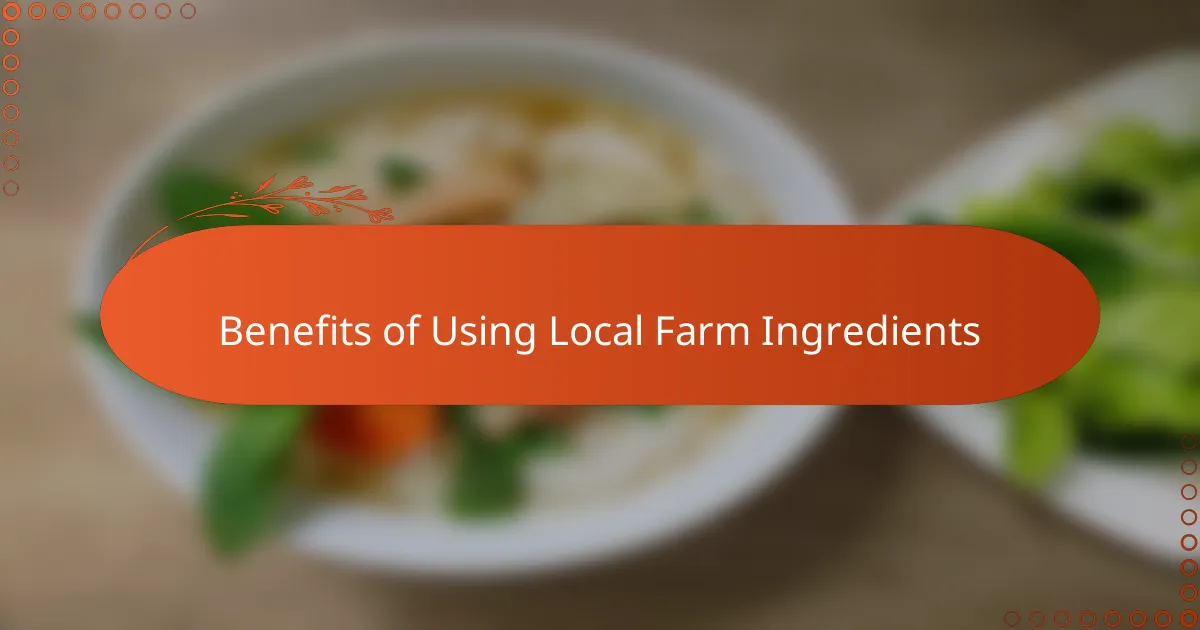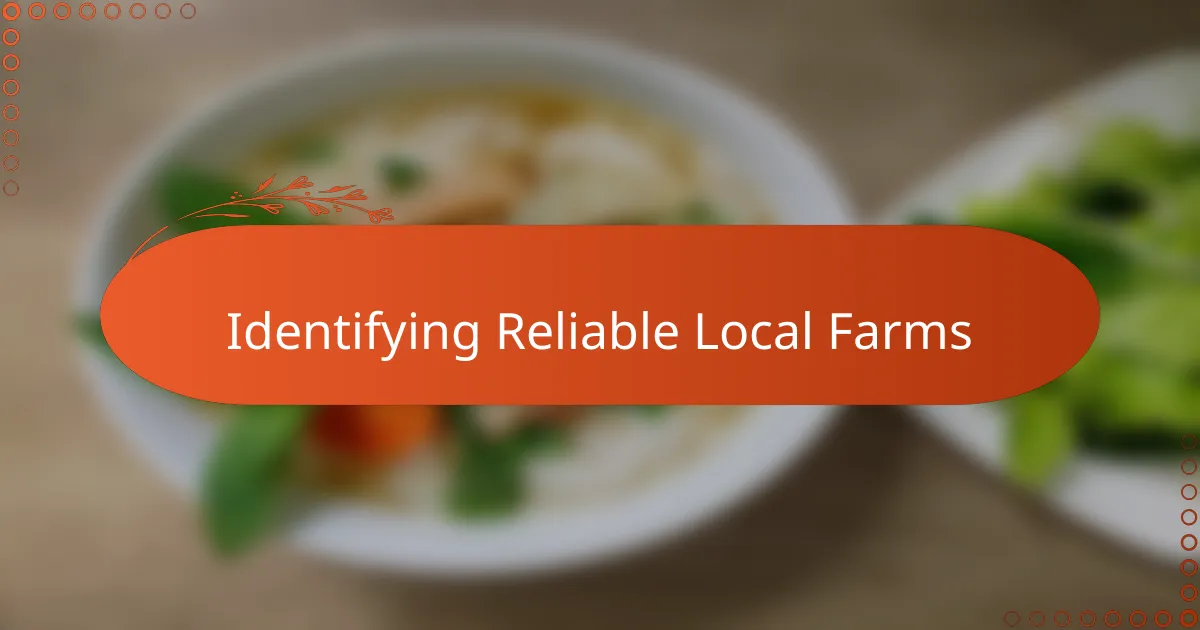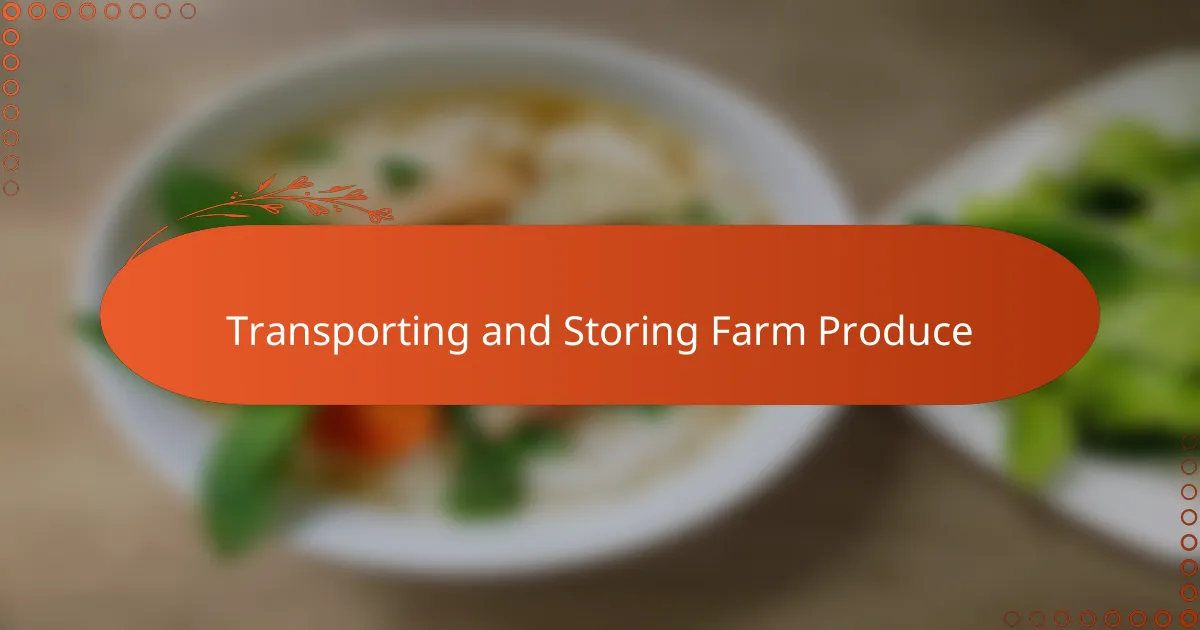Key takeaways
- Homesteading cooking promotes a deep connection to local ingredients, honoring farmers and celebrating nature’s bounty.
- Using fresh, seasonal produce enhances flavors and strengthens community ties while supporting sustainable practices.
- Building relationships with local farmers fosters trust and enriches cooking through shared experiences and knowledge.
- Intuitive cooking with available ingredients encourages creativity and simplicity, highlighting the natural flavors of the food.

Understanding Homesteading Cooking Recipes
Homesteading cooking recipes are more than just instructions; they are a connection to the land and to tradition. I’ve often found that these recipes invite you to slow down, appreciate each ingredient, and understand where your food truly comes from. Have you ever noticed how cooking this way makes every dish feel like a small celebration of nature’s bounty?
When I first started exploring homesteading cooking, I realized it’s about resourcefulness and respect. Using what’s fresh, seasonal, and local isn’t just practical—it’s a way to honor the effort farmers put into cultivating each crop. Do you think recipes feel different when you know the story behind the ingredients?
What makes these recipes so special to me is their simplicity and adaptability. They often require humble staples grown nearby, which encourages creativity in the kitchen. It’s rewarding to transform farm-fresh produce into meals that nourish both body and soul, wouldn’t you agree?

Benefits of Using Local Farm Ingredients
There’s something deeply satisfying about using ingredients that come straight from local farms. In my experience, the freshness is unmistakable—the flavors pop in a way that store-bought produce just can’t match. Have you ever tasted tomatoes that seem to burst with sunshine? That’s the magic of local.
Beyond flavor, I’ve noticed how sourcing locally strengthens my connection to the community. Knowing the farmers by name and hearing their stories adds a layer of meaning to each meal. It turns cooking from a routine chore into a shared experience rooted in trust and respect.
Plus, there’s the simple joy of supporting sustainable practices. Local farms often use methods that care for the land, which makes me feel like I’m doing my part to protect the environment. Isn’t it comforting to know your food is nurturing both you and the earth?

Identifying Reliable Local Farms
Finding reliable local farms felt like discovering hidden gems in my community. I learned to look for farms with consistent quality and transparent practices—those willing to share how they grow their crops and care for their animals. Have you ever noticed how a simple conversation with a farmer can reveal so much about the care behind your food?
I also found that visiting farms in person made all the difference. Walking through the fields and seeing the soil, plants, and animals for myself built a sense of trust I couldn’t get from a list or a website. There’s something reassuring about connecting directly with the source, don’t you think?
Word of mouth played a huge role too. I trusted recommendations from neighbors who shared their favorite farmers, especially those with a reputation for honesty and quality. Isn’t it amazing how community insights can point you toward places that truly align with your values?

Building Relationships with Farmers
Building relationships with farmers transformed the way I source my ingredients. Instead of just buying produce, I started engaging in conversations about their farming practices and seasonal availability. Have you ever experienced how a simple chat can turn a transaction into a meaningful connection?
One memorable moment was when a farmer invited me to help harvest in the early morning light. Sharing that experience deepened my appreciation for the hard work behind each carrot or egg. It made me realize that trust grows not just from quality, but from genuine human interaction.
Over time, these relationships became a source of inspiration and support. Farmers often offered tips on storage and preparation, which enriched my cooking. Don’t you find that knowing where your food comes from adds a special warmth to every meal?

Selecting Ingredients for Recipes
Selecting ingredients for recipes is where the magic truly begins. When I choose produce from local farms, I pay close attention to what’s in season—because fresh, ripe ingredients always make the flavors shine brighter. Have you ever noticed how a perfectly ripened peach tastes so much better than one picked too early?
I also think about the story behind each ingredient. Knowing that the vegetables were lovingly tended and harvested just days ago adds a layer of meaning to my meals. It’s like inviting a bit of the farm’s spirit right onto my plate.
Sometimes, I let the ingredients guide the recipe itself. If a farmer brings me an unexpected crop, I see it as a chance to experiment and create something new. Isn’t it exciting to cook with whatever the land is offering, rather than forcing a dish to fit a strict list?

Transporting and Storing Farm Produce
Transporting fresh farm produce always feels like a delicate task to me. I’ve learned that using sturdy, breathable containers and keeping items cool during the trip preserves their crispness and flavor. Have you ever opened a basket of veggies after a long drive and been relieved to find them still vibrant and firm?
Once home, storing these treasures properly becomes just as important. I like to keep leafy greens wrapped in damp cloths inside my fridge’s crisper drawer, which keeps them from wilting too soon. It’s a small effort, but it extends the life of the produce and keeps that fresh-from-the-farm feeling alive longer.
Sometimes, I wonder how different my meals would taste if I didn’t take these extra steps. From my experience, treating the ingredients gently from farm to kitchen honors the hard work behind each harvest and makes cooking feel even more rewarding. Have you noticed how care in storage can bring out the best in your food?

Incorporating Local Ingredients into Meals
Incorporating local ingredients into meals has completely changed how I approach cooking. When I bring fresh herbs or just-picked vegetables from the farm into my kitchen, I feel an immediate connection to the seasons and the cycles of nature. Have you ever noticed how a sprinkle of fresh thyme or a handful of crisp carrots can make a simple dish feel so vibrant and alive?
I often let the ingredients inspire my recipes rather than the other way around. There was this one time I found a bundle of watermelon radishes at the farm stand, and I decided to create a salad that highlighted their peppery crunch—it became an instant favorite. Isn’t it freeing to cook intuitively, using whatever the land provides?
Using local ingredients also encourages me to keep meals straightforward and respectful of their natural flavors. A perfectly ripe tomato needs little more than a dash of sea salt and a drizzle of olive oil to shine. Don’t you think that kind of simplicity honors both the ingredient and the farmer’s hard work behind it?



